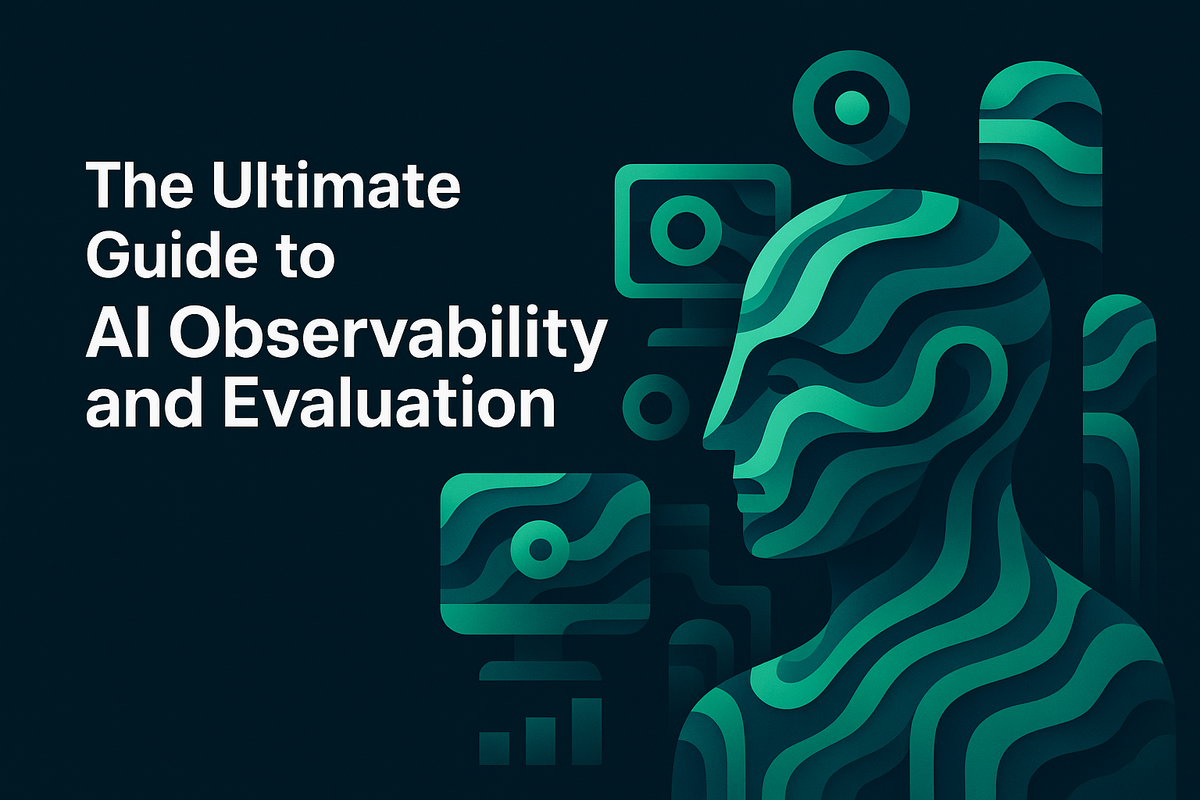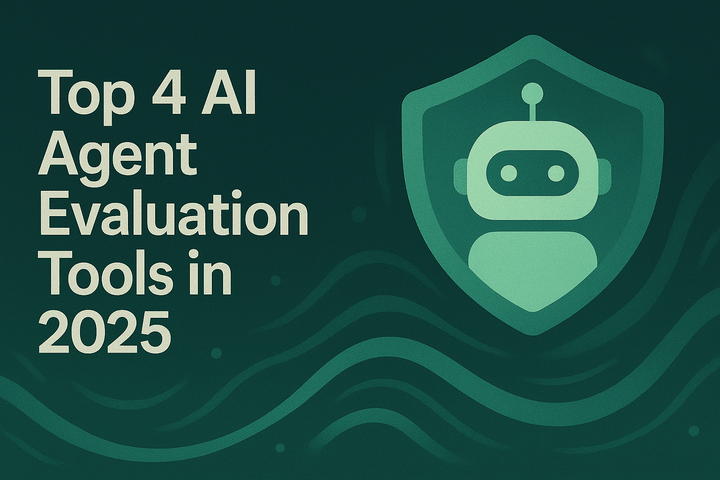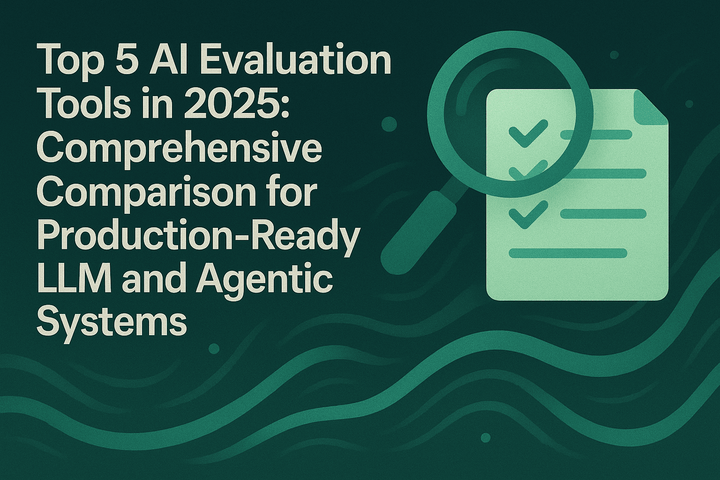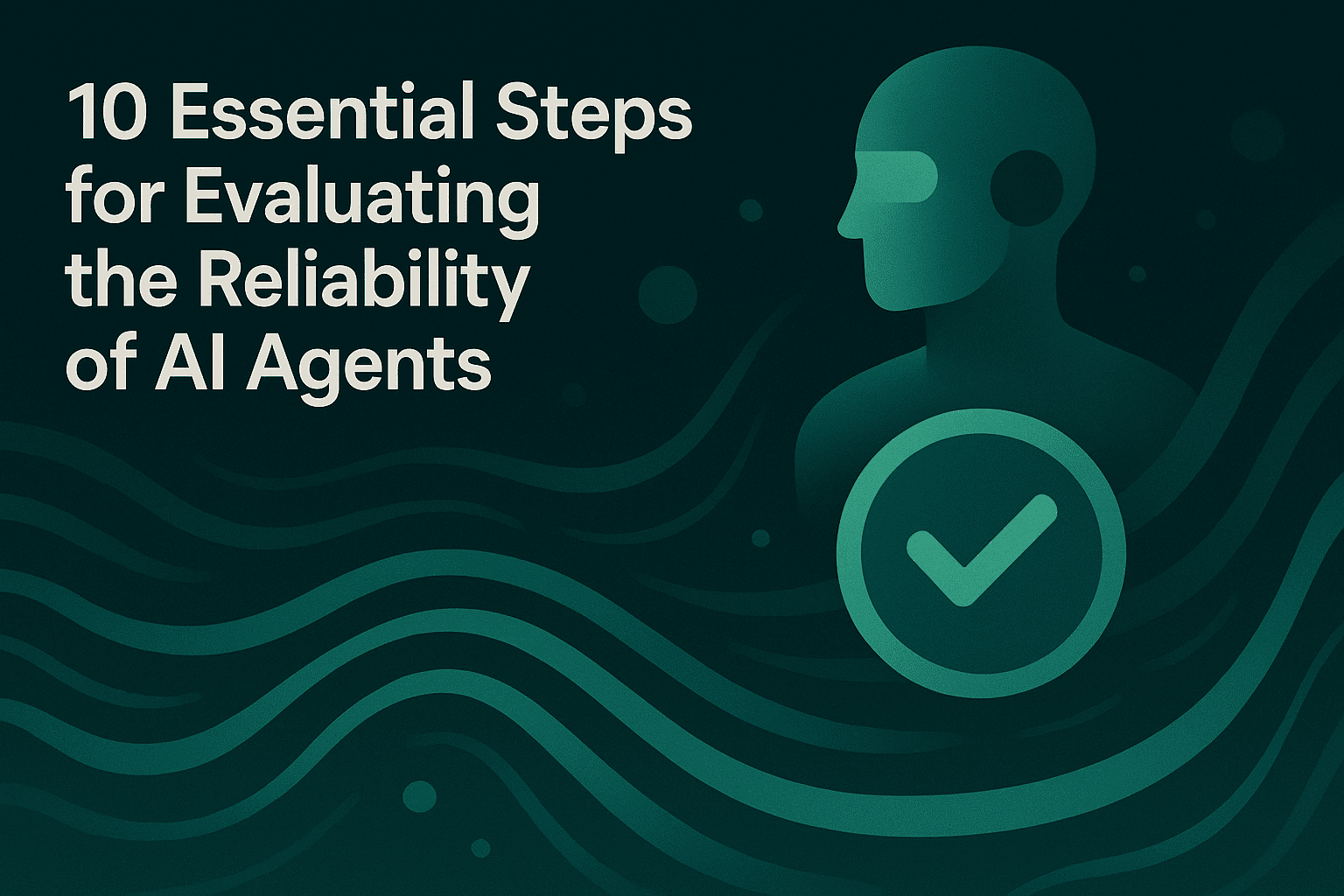The Ultimate Guide to AI Observability and Evaluation

The shift from traditional software to AI-powered applications has fundamentally changed how teams build, deploy, and maintain production systems. Unlike deterministic software where outputs are predictable, AI applications powered by large language models introduce probabilistic behavior that makes quality assurance significantly more complex. This complexity demands new approaches to monitoring, debugging, and ensuring reliability.
AI observability and evaluation have emerged as critical disciplines for teams building production AI systems. While traditional monitoring tracks system health metrics like latency and error rates, AI observability focuses on understanding model behavior, tracking quality degradation, and diagnosing failures in reasoning or output generation. Combined with rigorous evaluation frameworks, these practices enable teams to ship reliable AI applications faster and maintain quality at scale.
Understanding AI Observability
AI observability refers to the practice of tracking, measuring, and understanding the behavior of AI systems in production. Unlike traditional application monitoring, which focuses on infrastructure metrics, AI observability provides visibility into the internal workings of AI models, their decision-making processes, and the quality of their outputs.
At its core, observability for AI applications requires capturing detailed execution traces that show how inputs flow through your system, what prompts are sent to models, how models respond, and what final outputs are delivered to users. This level of instrumentation is essential because AI failures often manifest as subtle quality degradation rather than hard errors, a chatbot might provide factually incorrect information while appearing to function normally from an infrastructure perspective.
Modern AI applications frequently involve complex multi-agent architectures where multiple agents collaborate along with amalgamation of chain of thought reasoning, and retrieval-augmented generation (RAG) pipelines. Agent observability becomes critical in these scenarios, providing end-to-end visibility across distributed agent interactions and helping teams understand how information flows through multi-step reasoning processes.
Key Components of AI Observability
Effective AI observability platforms provide several essential capabilities:
Distributed tracing for AI applications tracks requests across multiple LLM calls, tool invocations, and retrieval operations, creating a complete picture of execution flow. This enables agent tracing that captures the full context of multi-turn conversations or complex task executions.
Real-time monitoring tracks both infrastructure metrics and AI-specific quality indicators. Teams need visibility into token usage, model latency, and cost alongside quality metrics like hallucination rates, response relevance, and task completion success. AI monitoring systems should alert teams to anomalies in either dimension, enabling rapid response to production issues.
Log management for AI applications goes beyond traditional logs to capture structured data about model inputs, outputs, intermediate reasoning steps, and retrieved context. This enables detailed root cause analysis when investigating quality issues or unexpected behavior. Production logs also serve as valuable training data for continuous improvement and iteration.
Debugging capabilities allow engineers to replay specific interactions, inspect model reasoning at each step, and identify failure points in complex agent workflows. Debugging LLM applications requires tools that help teams understand why a model generated a particular output given the context and instructions it received.
The Critical Role of AI Evaluation
While observability tells you what happened in your AI system, evaluation tells you whether what happened was good. AI evaluation is the systematic process of measuring the quality, reliability, and performance of AI applications against defined criteria and benchmarks.
Evaluation serves multiple purposes throughout the AI development lifecycle. During development, it helps teams compare different approaches, select optimal models, and validate that changes improve performance. In production, continuous evaluation detects quality regression and ensures systems maintain acceptable performance as data distributions shift or user behavior evolves.
Evaluation Methodologies
Statistical and deterministic evaluations provide objective measurements based on predefined rules or calculations. These include metrics like exact match accuracy, F1 scores for classification tasks, or custom business logic that validates outputs against expected formats or constraints. Deterministic evaluators are fast, consistent, and interpretable, making them ideal for catching obvious failures.
LLM-as-a-judge evaluation leverages language models to assess the quality of outputs from other AI systems. This approach enables nuanced evaluation of subjective qualities like faithfulness, tone, relevance, and coherence that are difficult to capture with deterministic rules. Research from organizations like Anthropic has demonstrated that advanced models can provide reliable quality assessments when given clear evaluation criteria and examples.
Human evaluation remains the gold standard for assessing AI quality, particularly for subjective dimensions or high-stakes applications. Human reviewers provide nuanced judgments about output quality, identify edge cases, and help teams understand user experience in ways automated metrics cannot capture. Effective platforms support human-in-the-loop workflows that make it easy to collect, aggregate, and act on human feedback.
Multi-modal evaluation is increasingly important as AI applications incorporate images, audio, and video alongside text. Evaluating voice agents, for example, requires assessing both the content of responses and voice quality factors like naturalness, pacing, and emotional appropriateness. Voice evaluation demands specialized approaches that account for the unique characteristics of speech-based interactions.
Evaluation Across Application Types
Different AI application patterns require specialized evaluation approaches. RAG systems need evaluation across retrieval quality, context relevance, and answer generation fidelity. RAG evaluation must assess whether the retrieval component surfaces the most relevant information and whether the generation component accurately synthesizes that information without hallucination.
Conversational agents and chatbots require evaluation at both the turn level (individual responses) and session level (overall conversation quality). Chatbot evals should measure response relevance, factual accuracy, conversation flow, task completion rates, and user satisfaction across multi-turn interactions.
Autonomous agents that take actions on behalf of users demand rigorous evaluation of task completion, safety, and decision quality. Agent evaluation must verify that agents correctly understand user intent, select appropriate tools, and successfully execute complex workflows without causing harm or unintended consequences.
Implementing Effective AI Observability
Building production-grade AI observability requires thoughtful instrumentation and infrastructure. The foundation is comprehensive logging that captures all relevant data about model invocations, including inputs, outputs, metadata, and contextual information.
Instrumentation Best Practices
Modern observability platforms provide SDKs that simplify instrumentation with minimal code changes. Teams should instrument at multiple levels of granularity, capturing high-level request/response pairs for production monitoring while also logging detailed trace information for debugging complex failures.
AI tracing should follow distributed tracing standards, creating parent-child relationships between operations and capturing timing information at each step. This enables teams to identify performance bottlenecks and understand the flow of execution through complex agent architectures.
Context propagation is critical for multi-agent systems and applications that span multiple services. Each operation should carry metadata that enables correlation across the entire execution path, including user identifiers, session IDs, and business context that helps teams segment and analyze production data.
Production Monitoring Strategies
Effective production monitoring combines real-time dashboards, automated alerting, and periodic quality checks. Teams should monitor both operational metrics (latency, throughput, error rates) and quality metrics specific to their application (faithfulness, task success rates, user feedback scores).
Anomaly detection helps identify subtle quality degradation that might not trigger threshold-based alerts. Automated evaluation approaches can model normal system behavior and flag outliers and anomalies that warrant investigation. This is particularly valuable for catching prompt injection attempts, model drift, or data quality issues.
Custom dashboards enable teams to create views tailored to their specific monitoring needs, slicing production data across custom dimensions relevant to their business logic. Product managers, engineers, and support teams may need different views of the same underlying data.
Combining Observability and Evaluation for Continuous Improvement
The true power of AI quality management emerges when observability and evaluation work together in a continuous improvement loop. Observability surfaces issues and opportunities; evaluation quantifies them; and the resulting insights drive experimentation and optimization.
The Quality Feedback Loop
Production logs collected through observability infrastructure become evaluation datasets. Teams can sample production data, run it through evaluation suites, and measure real-world performance across quality dimensions. This provides ground truth about how systems perform under actual usage patterns rather than synthetic test scenarios.
Data curation workflows help teams systematically collect and organize production data for evaluation. Edge cases discovered through monitoring become test cases; successful interactions inform prompt optimization; and failure modes guide targeted improvements.
Human feedback collected in production (through explicit ratings, implicit signals, or support tickets) enriches evaluation datasets and trains better automated evaluators. This creates a virtuous cycle where production experience continually improves evaluation accuracy.
Pre-Production Testing with Simulation
Before deploying changes to production, teams need confidence that modifications improve quality without introducing regressions. AI simulation enables comprehensive testing across hundreds of scenarios without impacting real users.
Simulation generates synthetic user interactions based on real-world patterns, testing how agents respond across diverse scenarios, user personas, and edge cases. Teams can replay production failures in simulation, verify fixes, and ensure similar issues won't recur. Agent simulation accelerates the debugging cycle by making it easy to reproduce issues and validate solutions.
Regression testing through simulation ensures new prompt versions or model changes don't degrade performance on known use cases. Teams can maintain large evaluation suites that run automatically before deployment, catching quality issues before they reach production.
Advanced Evaluation Patterns
Sophisticated AI applications require evaluation approaches that match their complexity. Multi-agent systems, for example, need evaluation at multiple levels, individual agent performance, agent-to-agent collaboration quality, and overall system outcomes.
Hierarchical Evaluation
Agent evals should assess performance at the granularity most relevant to each component. For a customer support agent, this might include evaluating intent classification accuracy, knowledge retrieval precision, response generation quality, and overall issue resolution success.
Span-level evaluation examines individual operations within a trace, was the right tool selected? Did retrieval return relevant documents? Was the generated response factually accurate? Trace-level evaluation considers the entire execution path, did the agent successfully complete the user's task?
Session-level evaluation looks at multi-turn conversations, did the agent maintain context appropriately? Handle clarification requests gracefully? Arrive at satisfactory resolution? This hierarchical approach provides actionable insights at each level of the system.
Specialized Evaluation for Voice Applications
Voice agents introduce unique evaluation challenges beyond text-based applications. Voice quality factors include speech recognition accuracy, natural language understanding in spoken form, response latency (critical for natural conversation flow), and text-to-speech quality.
Voice observability must capture audio alongside text transcripts to enable complete analysis. Evaluation should assess both the literal content of conversations and voice-specific qualities like naturalness, prosody, and error handling when speech recognition fails.
Latency becomes particularly critical for voice applications where delays break conversational flow. Voice monitoring should track end-to-end response time including speech-to-text, model processing, and text-to-speech generation, alerting teams when latency exceeds acceptable thresholds.
Infrastructure and Tooling Considerations
Building observability and evaluation infrastructure in-house requires significant engineering investment. Teams must handle high-throughput data ingestion, efficient storage for large trace volumes, query infrastructure for analysis, and visualization layers for different stakeholders.
Platform Requirements
Production AI observability platforms must handle massive data volumes with minimal performance impact on production systems. Instrumentation should add negligible latency to requests while capturing detailed telemetry. Asynchronous logging and batching help minimize overhead.
Retention policies balance storage costs against analytical needs. Recent data requires fast access for real-time monitoring and debugging. Historical data supports trend analysis and model drift detection but can move to cheaper storage tiers. Efficient compression and columnar storage formats reduce infrastructure costs.
Model observability platforms should integrate with existing engineering workflows, CI/CD pipelines, alerting infrastructure, incident management systems, and collaboration tools. API access enables programmatic interaction for automation and custom tooling.
Managing AI Gateway Infrastructure
AI gateways provide a unified interface for accessing multiple model providers while adding capabilities like automatic failover, load balancing, and semantic caching. Gateway infrastructure becomes a natural instrumentation point for observability, capturing all model interactions without requiring changes to application code.
Bifrost, Maxim's high-performance AI gateway, unifies access to 12+ providers through a single OpenAI-compatible API while providing automatic fallbacks, intelligent caching, and built-in observability. This simplifies instrumentation and provides comprehensive visibility across all model interactions regardless of provider.
Gateway-based observability captures provider-level details (which API keys are used, provider latency, error rates by provider) alongside application-level semantics. This helps teams optimize cost, reliability, and performance across their multi-provider infrastructure.
Organizational Best Practices
Implementing effective AI quality management requires more than just tooling, it demands organizational practices that embed quality throughout the development lifecycle.
Cross-Functional Collaboration
AI quality is not solely an engineering concern. Product managers need visibility into how AI systems perform against user needs. Product teams should be able to configure evaluations, run experiments, and analyze results without requiring constant engineering support.
Support teams benefit from observability infrastructure that helps them investigate user issues. Searchable logs, filtered views of production data, and the ability to trace specific user sessions enable faster issue resolution and better customer experience.
Quality assurance teams should integrate evaluation into testing workflows. QA engineers can define test scenarios, run evaluation suites, and verify that AI systems meet quality standards before deployment.
Continuous Improvement Processes
Regular evaluation cadences ensure quality doesn't drift over time. Teams should run comprehensive evaluation suites weekly or monthly, comparing results against previous baselines to detect degradation. Production monitoring should feed back into these evaluation datasets, ensuring tests reflect real-world usage.
Prompt engineering workflows should include evaluation at each iteration. Teams should compare new prompt versions against current production prompts using standardized test suites, measuring improvements quantitatively before deployment.
Post-deployment monitoring validates that improvements measured in evaluation translate to production. A/B testing frameworks enable controlled rollouts where teams can compare new versions against baselines using real production traffic.
Security and Compliance Considerations
AI observability involves collecting and storing potentially sensitive data, user inputs, model outputs, retrieved documents. Teams must implement appropriate controls to protect privacy and meet compliance requirements.
Data retention policies should consider regulatory requirements while enabling necessary analytics. PII Anonymization techniques can reduce risk while preserving analytical value. Access controls ensure only authorized personnel can view production data.
Audit trails documenting model decisions become increasingly important in regulated industries. Observability infrastructure should maintain immutable records of AI system behavior that support compliance and accountability requirements.
Looking Forward: The Evolution of AI Quality Management
As AI systems grow more sophisticated and autonomous, quality management practices will continue to evolve. Multi-agent systems with dozens of collaborating agents will require new observability approaches that scale to increased complexity. Evaluation methodologies will advance to better assess long-horizon tasks and emergent capabilities.
The integration of observability and evaluation with AI development workflows will deepen. Platforms that provide end-to-end visibility from experimentation through production enable faster iteration and more confident deployment. Automated feedback loops will increasingly drive optimization with minimal human intervention.
Organizations that invest in robust AI quality infrastructure today position themselves to scale AI deployments confidently. The practices and tooling that enable reliable AI applications will become competitive advantages as AI adoption accelerates across industries.
Get Started with Comprehensive AI Quality Management
Building reliable AI applications requires purpose-built infrastructure for observability and evaluation. Maxim AI provides an end-to-end platform that helps teams ship AI agents reliably and more than 5x faster, with comprehensive capabilities spanning experimentation, simulation, evaluation, and production observability.
Whether you're debugging a complex multi-agent system, optimizing prompt performance, or ensuring production quality, Maxim provides the visibility and tools you need. Start a free trial or schedule a demo to see how Maxim can transform your AI quality management.


